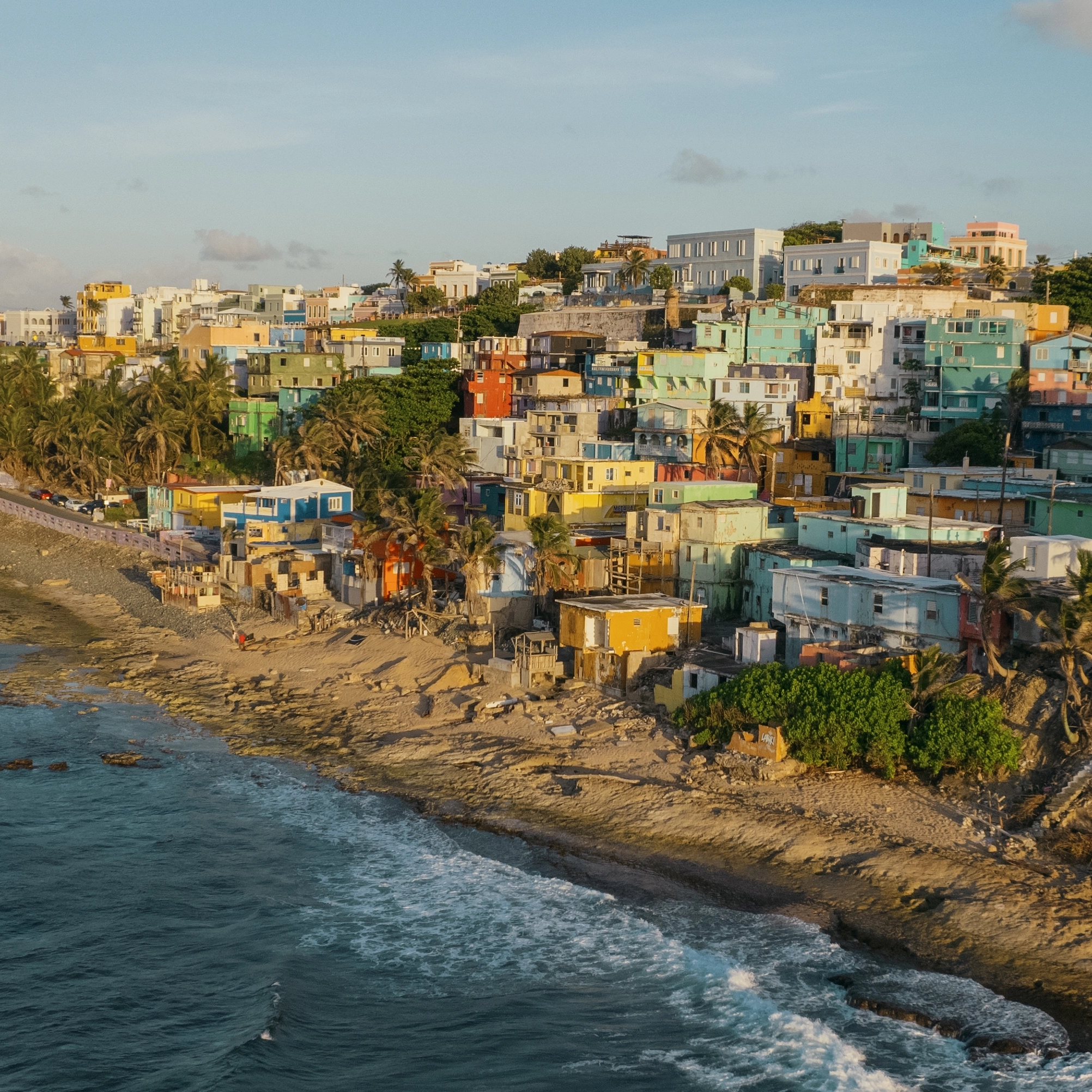by | June 1, 2017
What will happen to Florida Beaches (our most valuable resource) if state water levels continue to rise?
A look at some of Florida's biggest environmental challenges, heroes and hopes

Nobody knows more about Florida’s beaches than Dr. Beach.
Every year, Florida International University professor Stephen Leatherman—aka Dr. Beach— unveils his list of the U.S.’s top 10 beaches. It’s something he started by accident when, almost 30 years ago, a magazine reporter called him up to interview him about the factors that make for a good beach. Leatherman was about to leave for China and told the reporter he had no time to talk. “Fine,” the reporter said, “just give me your top 10 beaches.” He did, then he hopped on a plane and forgot all about the conversation until after the magazine appeared.
Suddenly, Leatherman’s phone began ringing off the hook. He was besieged by beach town officials asking what they could do to get on the list or to move higher on it.
“I’d written all these books and journal articles, and nobody ever called me about those,” he says, laughing. “But a top 10 list? That was different.”
Invariably, a Florida beach or two shows up on Leatherman’s annual list, and, more than once, a Florida beach has wound up at No. 1.

“In general, Florida beaches rate very high,” explains Leatherman, who earned a doctorate in environmental coastal science from the University of Virginia. “There are no bad major public beaches in Florida.”
He loves their fine-grained sand, gentle surf, accessibility and generally good water quality. He also loves the fact that so many of the best beaches are protected from development by Florida’s award-winning state park system.
But Florida’s beaches are facing threats that could knock them off Leatherman’s list and chase away the nearly 113 million tourists who flocked to the state last year, many to enjoy the beaches—and spent an estimated $109 billion.
Like what you read? Click here to subscribe.
Start with the mess that closed Martin County’s beaches on last Fourth of July weekend.
ALGAL BLOOM BLUES
The stuff floating in the water—thick layers of toxic blue-green algae lapping at the sand—looked like guacamole.
“I’ve seen Jensen Beach closed for sharks,” says Irene Gomes, whose family has run the Driftwood Motel since 1958. “I’ve never seen it closed for an algae bloom before.”
As bad as it looked last summer, the stench was worse, driving away Gomes’s customers, chasing off paddleboard and kayak renters, and forcing residents to stay indoors. One of Gomes’s friends, nurse Cyndi Lenz, sums it up: “It smells like death on a cracker.”
Algae are microscopic organisms. They’re generally harmless, but they can proliferate wildly, becoming an armada of millions known as an algal bloom. The bloom may produce toxins harmful to fish, animals and humans.
The algal bloom along the coast didn’t come from leaky local septic tanks, which state officials want to replace. Nor was it fueled by the six sewer outfalls that shoot treated municipal wastewater out into the Atlantic (and will continue to do so until at least 2025).

No, the economic and environmental disaster that closed Martin’s beaches was cooked up in the stew pot that is Lake Okeechobee, where state officials have not held polluters accountable to limits that were created in 2001, according to Mark Perry, executive director of the Florida Oceanographic Society, based in Stuart.
Why did the algal bloom start in the lake last May? Nobody knows what sparks an algal bloom, says Gil McRae, director of the Florida Fish and Wildlife Research Institute in St. Petersburg. Heat has something to do with it, as well as a good supply of nutrient pollution, both of which were abundant at the time. Lake Okeechobee, Florida’s biggest freshwater lake, is a repository for nutrient-polluted runoff from the suburbs and farms around its rim. The nutrients come from fertilizer, manure and septic waste.
The lake is also a flooding threat because the earthen Herbert Hoover Dike, built around its rim after a 1928 hurricane pushed Okeechobee over its natural banks and killed 2,500, is at risk for leaking and collapsing. To reduce the chance of a breach during hurricane season, the U.S. Army Corps of Engineers tries to keep water levels 12.5 to 15.5 feet above sea level. When heavy rains hit last January, the Corps started dumping water from the lake. They sent it west, via the Caloosahatchee River, into the waters surrounding Fort Myers and Sanibel and east, via the St. Lucie River, into the waters around Stuart—contaminating both Florida coastlines.

Sanibel residents immediately objected. As the lake’s flow entered Pine Island Sound, it formed a dark brown plume that sliced through the middle of Sanibel’s teal-hued waters at the height of its tourist season. Parasailing tourists would land and comment on how “nasty” it looked. Bait houses, fishing guides, beach hotels and restaurants saw their business dwindle and disappear.
Then, as the lake began suffering from a 33-square-mile harmful algal bloom in mid-May, the pulses of fresh water the Corps sent to the coast spread the algae along the beaches. The bloom was spotted May 13, Perry says, and, within days, it was growing in the St. Lucie estuary.
It wasn’t the first time this had happened. Normally, the algae that thrive in fresh water are killed by encountering salt water. This time, however, the heavy pulses from the lake—about a billion gallons of water a day—provided enough fresh water to keep the algal bloom growing, Perry says.
Experts who have monitored the health of that estuary for decades say this was the worst and largest algal bloom they’ve seen. It lasted for months, finally subsiding with the summer’s end.
Still, there is a fear that the tourists who were driven away from the Atlantic and Gulf coasts won’t come back this summer.
The state has learned something from last summer, making strides this spring toward passing legislation to support building reservoirs on state-owned lands that could reduce discharges to coastal waters, while sending more fresh water south to the Everglades and Florida Bay.

EROSION REDUX
Florida’s early settlers had no use for beaches. To them, if you couldn’t plow it, it was worthless. The beach had an additional downside: its lack of permanence.
“No one thought of building much near the ocean, because it would eventually sweep any structure away,” wrote Charles Pierce, a pioneer who visited the beach area off of Lake Worth to hunt bear.
Now, of course, the beaches drive Florida’s tourism and real estate sectors. Yet the problem remains the same as it was in Pierce’s day. Nothing on a beach is permanent.
Geologists call the beaches on barrier islands “dynamic.” They are constantly moving as they erode in one place and build back up in another. Beach erosion becomes particularly pronounced during tropical storms and hurricanes—hence the importance of barrier islands, which absorb the force of pounding waves, sparing the mainland.
Florida beaches along the Gulf of Mexico are particularly vulnerable to erosion. A 2012 U.S. Geological Survey report found that 70 percent of Gulf beaches are vulnerable to extreme erosion during even the weakest of hurricanes, and 27 percent are projected to be inundated.
To cope with the beaches’ continuous loss of sand, the local, state and federal governments go out and get more, using taxpayer money. Since 1922, engineers have been boosting beaches by digging up sand hundreds of miles off the Atlantic Coast and pumping it to the land.
Since then, more than 300 major renourishment projects have been pursued nationwide, dumping a total of 517 million cubic yards of sand onto the country’s waning beachfronts, according to the National Oceanic and Atmospheric Administration, the federal agency that watches the sea and sky.

Florida’s beaches have reaped the greatest benefit from federally funded renourishment projects. Thirty-five of Florida’s 67 counties have used taxpayer money to artificially enhance their beaches or to rebuild them after tropical storms and hurricanes washed them away. It’s not cheap. Replacing the sand on 2.2 miles of Vero Beach wiped away by Hurricane Matthew last year was expected to cost more than $3 million.
Those counties say they have little choice. Tourists who show up at a Florida hotel and find that there’s no beach anymore are apt to check out early. The other problem, of course, is that, if the beach isn’t rebuilt, the hotels and condominiums built on that expensive real estate will topple into the water.
Yet rebuilding the beaches is only a temporary solution. The transplanted sand washes away too, and soon—not unlike a Hollywood star relying on plastic surgery to maintain the illusion of youth—the beach needs another treatment, and another, and another.
What’s worse, rebuilding Florida’s beaches is likely to become a greater expense in the future thanks to the third threat: climate change.
CLIMATE-CHANGE CLARITY
The list of people who deny or question the existence of human-caused climate change includes Governor Rick Scott, U.S. Senator Marco Rubio and President Donald Trump. The list of those convinced that climate change is real includes the U.S. military, the Vatican and the heads of the scientific academies of all the then G8 countries.

“There is no debate that humans have changed the amount of CO2 and other greenhouse gasses in the atmosphere,” State Climatologist David Zierden writes on his official web site. “All scientists also agree that the world has been warming over the last century and that the greenhouse gases play a part.”
The evidence, say scientists, is against the deniers. Based on weather records going back to the 1880s, 2016 was the warmest year on record globally and continued to back up a long-term warming trend the third year in a row. Rising seas are pushed higher because of melting glaciers and because water expands as it gets warmer. Sea levels already have risen by about 9 inches in the last century and are projected to rise another 9 to 24 inches in the next 50 years.
That’s already worsening rain-related flooding in the streets of coastal cities such as Miami Beach. Tidal charts in Key West, which date back to the 19th century, have documented a rise of 9 inches in the past century. Sand bags have become a new amenity for some restaurants there.
Anyone living in Florida now can see the consequences of a rising seas, says Albert C. Hine, a University of South Florida geological oceanography professor and one of five co-authors of Sea Level Rise in Florida: Science, Impacts, and Options (University Press of Florida, 2016). In one neighborhood, close to the waterfront in St. Petersburg, some streets flood on sunny days, “during a spring high tide or after heavy rain the sun comes out and the rainwater has no place to flow down to because the water in Tampa Bay is high,” says Hine. Some Florida cities are already trying to adapt, Hines notes. Miami Beach is spending $400 to $500 million to raise its roads and overhaul its stormwater system by adding as many as 70 pumps.
The beaches are bearing the brunt of it. Because Florida is so flat, even a small increase in sea level can cause big problems. A one-foot rise in the sea level would move the shoreline 2,000 to 10,000 feet inland. A 2007 study by FSU found that sea level rise was gobbling up Florida’s beaches by almost five feet a year.

“As the sea level continues to rise, it will severely impact the barrier islands,” Hine says.
Current flood charts show the beaches simply slipping beneath the waves, but that’s not realistic, he says. Instead, he predicts, the force of the waves will “alter the shape of the islands, put channels where there weren’t any, reshape the dunes.”
“In 10 or 20 or 30 years, these islands are going to change their shape and their orientation and elevation, and, maybe in 40 to 50 years if nothing is done, literally, buildings could be out in the surf zone,” Hine says.
Once that happens, say “goodbye” to all the tourists. And Dr. Beach’s annual list of the best beaches might turn into a grim list of those we have left.
Is there anything we can do? Until governments at all levels begin working to adapt to or even reverse climate change, the situation will continue getting worse.
See how Florida fared on the list of the top U.S. beaches in Sandy Land: Florida’s Beaches and check out three environmental groups fighting for Florida’s waters in Making Waves for Our Waters.
About the Author
Craig has covered Florida’s quirks and creatures for Flamingo since 2016, writing about springs, panthers, manatees, python hunts and Ross Allen, the snake man of Silver Springs. He published his seventh book, “Welcome to Florida: True Tales from America’s Most Interesting State” in March 2025.





